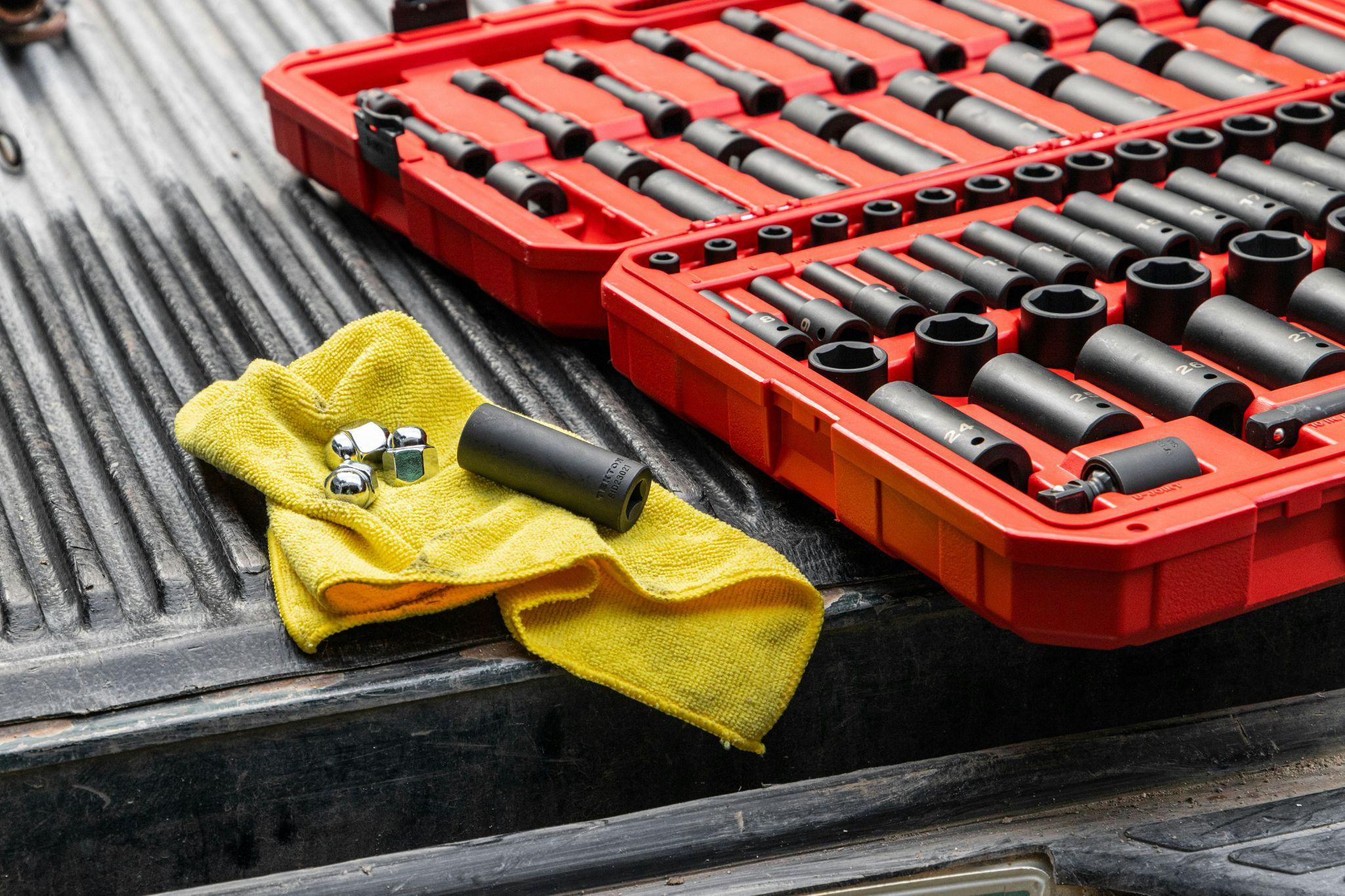Whether you're a seasoned DIYer or someone who simply loves a cool-looking garage, transforming a plain toolbox into a customized showpiece is an exciting and practical way to express creativity.
Not only does it enhance your space visually, but it also turns an ordinary item into something personal, functional, and seriously cool. In this guide, we’ll walk you through everything you need to know to create eye-catching DIY toolbox art from prepping your surface to sealing your masterpiece for years of use.
Why Customize Your Toolbox?
The Rise of DIY Toolbox Art
Over the past few years, DIY toolbox art has exploded in popularity across maker spaces, auto shops, and creative garages. Just like sneakers or skateboards, the humble toolbox has become a canvas for personal expression.
With the rise of social media, people are now sharing their one-of-a-kind tool storage designs ranging from retro and industrial themes to comic book-style illustrations. This trend has inspired more creators to upgrade their workspace aesthetic and showcase their artistic talents.
More Than Just Storage
Customizing your toolbox is about more than looks. It can:
-
Reflect your personality or professional brand
-
Boost motivation every time you walk into the garage
-
Bring visual harmony to your creative garage decor
-
Spark conversations or social media engagement
Think of it as wearable art for your workspace.
Choosing the Right Toolbox for a Paint Job
Metal vs. Plastic Toolboxes
Both materials work well, but they require different approaches:
-
Metal Toolboxes
-
Pros: Durable, long-lasting, professional finish
-
Cons: Can rust; needs rust treatment before painting
-
Best Paint: Enamels, acrylics, or spray paints with a metal primer
-
Plastic Toolboxes
-
Pros: Lightweight, affordable
-
Cons: Needs sanding and special primers for adhesion
-
Best Paint: Plastic-compatible acrylics and flexible sealants
Size & Function Considerations
Choose a toolbox that matches your goals:
-
Small and Portable – Great for quick weekend projects or simple designs.
-
Large Chest-Style – Offers more space for elaborate artwork.
-
Wall-Mounted Units – Perfect if you want your design to double as creative garage decor.
Repurposing Old Toolboxes
Don’t toss that beat-up old box and restore it! A little sanding, a few coats of primer, and a bold new design can breathe fresh life into any neglected storage unit.
Inspiration & Design Planning
Painted Toolbox Ideas to Get You Started
Need a creative jumpstart? Try one of these popular themes:
-
Retro Pinstripes – Classic auto shop vibes
-
Graffiti Tags – Urban and bold
-
Pop Art Panels – Bright colors with comic-style outlines
-
Industrial Black & Chrome – Sleek and modern
-
Tattoo-Inspired Art – Skulls, roses, flames perfect for edgy designs
-
Military Themes – Camo, aviation decals, stencils
Choosing a Style That Matches Your Garage
Your toolbox should fit right into your space. Whether your garage is minimalist, vintage, or high-tech, match your paint job to complement your custom tool storage and other decor.
Sketching Your Vision
Before picking up a brush:
-
Use pencil and paper to rough out your ideas
-
Try free apps like Procreate or Canva
-
Print stencils or create tape guidelines to ensure precision
Prepping Your Toolbox Like a Pro
Disassembly Tips
Start by removing any:
-
Handles
-
Latches
-
Drawers
-
Casters
Label each part and store hardware in containers so nothing goes missing.
Cleaning and Degreasing
Use a degreaser or warm soapy water to clean the surface. Remove:
-
Dirt
-
Grease
-
Rust flakes (for metal boxes)
Let it dry completely before the next step.
Sanding for Paint Adhesion
Lightly sand the surface with 220–400 grit sandpaper:
-
For metal: Remove rust and scuff the surface
-
For plastic: Avoid over-sanding, just create a “toothy” texture
Priming the Surface
Use a primer designed for the toolbox material:
-
Metal Primer for rust prevention
-
Plastic Primer for flexible adhesion
-
Let dry for 12–24 hours before painting
Tools and Materials You’ll Need
Paint Options for Toolbox Art
-
Acrylic Paints – Great for fine details and layering
-
Enamel Spray Paint – Fast application and even coverage.
-
Finish Options – Matte, satin, gloss, or metallic
Brushes, Sprayers & Tape
-
Foam brushes and detail brushes for control
-
Spray paint or airbrush for larger areas
-
Painter’s tape or masking tape for sharp lines
Stencils & Decals
-
Pre-made stencils: Letters, flames, patterns
-
Custom stencils: Logos or personal symbols
-
Vinyl decals for finishing touches
Protective Gear
-
Respirator mask
-
Nitrile gloves
-
Protective eyewear
-
Adequate ventilation
Let’s Paint: Step-by-Step Process
Applying the Base Coat
Start with a solid background:
-
Use even, sweeping motions if spraying
-
Allow 2–3 light coats rather than one heavy coat
-
Dry completely before moving on
Layering and Detailing
Build up your artwork gradually:
-
Background → Midtones → Highlights
-
Use smaller brushes for fine lines and outlines
-
Create shadows and dimension for a professional look
Adding Accents and Text
Personalize it with:
-
Your name or business logo
-
Technical patterns (wrenches, bolts, schematics)
-
Motivational quotes or workshop rules
Drying Time and Paint Safety
-
Let each layer dry fully before applying the next
-
Use fans or dehumidifiers in damp environments
-
Follow paint can instructions for cure times
Finishing Touches & Sealing the Design
Choosing a Sealant
Protect your masterpiece with:
-
UV-resistant clear coat
-
Waterproofing layer
-
Gloss, matte, or satin finishes depending on your style
How to Seal Without Smudging
-
Apply 2–3 thin coats with a spray-on sealant
-
Hold the can 10–12 inches away
-
Allow at least 24 hours of drying before handling
Reassembling Your Toolbox
Once sealed and dried:
-
Reinstall hardware and moving parts
-
Test each component to ensure everything functions properly
Toolbox Customization Beyond Paint
Custom Tool Storage Inserts
-
Use foam inserts for a clean, professional interior
-
Paint or stain wood dividers
-
Label bins or compartments for extra organization
Interior Artwork
-
Paint a surprise design under the lid
-
Add inspirational phrases or color-code sections
Wheels, Casters, and Handles
-
Spray-paint handles or add vinyl grips
-
Customize wheels with color accents
Maintaining Your Painted Toolbox
How to Keep It Looking Fresh
-
Wipe with a soft cloth—avoid harsh chemicals
-
Dust regularly to prevent buildup in details
Touch-Up Tips
-
Save leftover paint for quick repairs
-
Use small artist brushes for scratch fixes
Storage Tips
-
Avoid direct sun exposure or damp areas
-
Use covers or place under shelving when not in use
Cool Ways to Show It Off
Garage Display Ideas
-
Add lighting above or around your toolbox
-
Mount it in a display nook with other creative garage decor
Social Media & DIY Forums
-
Share your work on Instagram, Reddit (r/DIY), or maker communities
-
Include step-by-step pics and tag relevant brands or tools
Inspiration for Your Next Project
-
Paint a matching workbench or locker
-
Coordinate your toolbox with your garage walls, shelves, or tool pegboards
(Source: @j_stino)
Your toolbox doesn’t have to be just another metal box. It can be a creative outlet, a statement piece, or a motivational part of your workspace. Whether you’re aiming for something sleek and subtle or vibrant and loud, there's no wrong way to approach DIY toolbox art.
For creators looking to achieve next-level results, premium paints like those from Angelus Direct provide the pigment quality and durability that serious artists rely on especially for tough surfaces like toolboxes, leather, and gear.
FAQs
Q: What kind of paint works best for metal toolboxes?
A: Enamel spray paint or acrylic paint with a metal primer base is ideal for durability and color vibrancy.
Q: Can I paint a plastic toolbox too?
A: Yes, just be sure to use plastic-specific primer and paints for best adhesion and flexibility.
Q: How long will the paint job last?
A: With proper prep, sealing, and care, your design can last for years even with regular use.
Q: How do I prep a toolbox that’s already rusted?
A: Sand down rusted areas with a wire brush or sandpaper, apply rust-inhibiting primer, then paint.
Q: Where can I find high-quality detail paints and sealants?
A: Specialty suppliers like Angelus Direct offer long-lasting paints that work great on toolboxes and other DIY projects.

